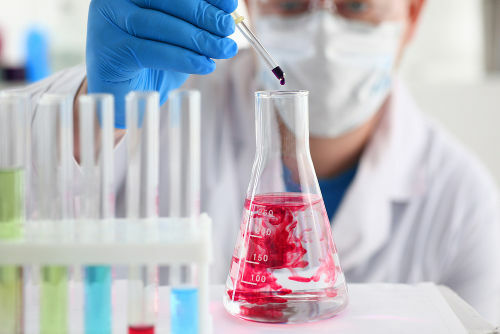Generally, when studying reactions, we view them as ideal, that is, we view all reactants as completely reacting; exactly as described in the chemical equations. However, in the real world this does not always happen. A number of factors can interfere with the development of a chemical reaction.
For example: there is the impurity of the reagents, their inadequate handling, imprecision of the measurements carried out by the laboratory equipment or industrial machines, not completeness of the reaction at the time the measurements are taken, a concurrent reaction (that is, which occurs exactly while our reaction of interest may consume the reagents used), the pressure and temperature may vary, and so on.
All these factors must be taken into account in order to prepare the maximum amount of products from a given amount of reagent. Let's see, for example, what happens when the reaction does not occur with the total consumption of reagents due to the excess of one of them, because often in the industry the reagents are not brought into contact in the proportions Exact Sciences.
For example, consider the reaction below between carbon monoxide and oxygen:
2 CO (g) + O2 (g) → 2CO2(g)
Based on the stoichiometric ratio shown in the balanced reaction above, two molecules of carbon monoxide to react with one of oxygen, generating two molecules of carbon dioxide. carbon. The ratio is therefore 2: 1: 2. If this ratio is changed and one of the reactants is in excess, the reaction will not proceed in the same way:
2 CO (g) + 2 O2 (g) → 2 CO2(g) + O2 (g)
Considering the example above, which is not in the stoichiometric proportion, it appears that carbon monoxide is totally consumed while oxygen is not. This means that oxygen is the excess reagent and the carbon monoxide is the limiting reagent.
Do not stop now... There's more after the advertising ;)
O limiting reagent it actually limits the reaction, because once it is completely consumed, the reaction ceases, no matter how much excess you have left of the other reactant.
Determination of limiting reagent:
From the balanced chemical equation it is possible to determine who is the limiting reagent and what is in excess and the relationship between the quantities of substances involved.
Let's look at an example of how to perform this calculation; let us consider the case of the combustion of alcohol:
Problem: A mass of 138 g ethyl alcohol (C2H6O) was set to burn with 320g of oxygen (O2), under normal conditions of temperature and pressure. What is the mass of carbon dioxide released and excess reagent, if any?
Resolution:
The balanced reaction is given by:
1C2H6O(V) + 3 O2(g) → 2CO2(g) + 3H2O(v)
1 mol 3 mol 2 mol
46g 96g 88g
138g 320g
Just by analyzing the data, we see that the mass of oxygen is proportionally greater than that of alcohol, so oxygen is the excess reactant and ethyl alcohol is the limiting reactant.
Calculating the mass of carbon dioxide formed from the amount of limiting reagent:
46g of C2H688g of CO2
138g of C2H6the x
x = 264 g of CO2
Excess oxygen mass is determined analogously:
46g of C2H696 02
138g of C2H6the x
x = 288 g of 02
The excess mass is the difference between the mass that was put to react and the one that actually reacted:
320g - 288g= 32 g
By Jennifer Fogaça
Graduated in Chemistry
Brazil School Team
Would you like to reference this text in a school or academic work? Look:
FOGAÇA, Jennifer Rocha Vargas. "Excess reagent and limiting reagent"; Brazil School. Available in: https://brasilescola.uol.com.br/quimica/reagente-excesso-reagente-limitante.htm. Accessed on June 27, 2021.


